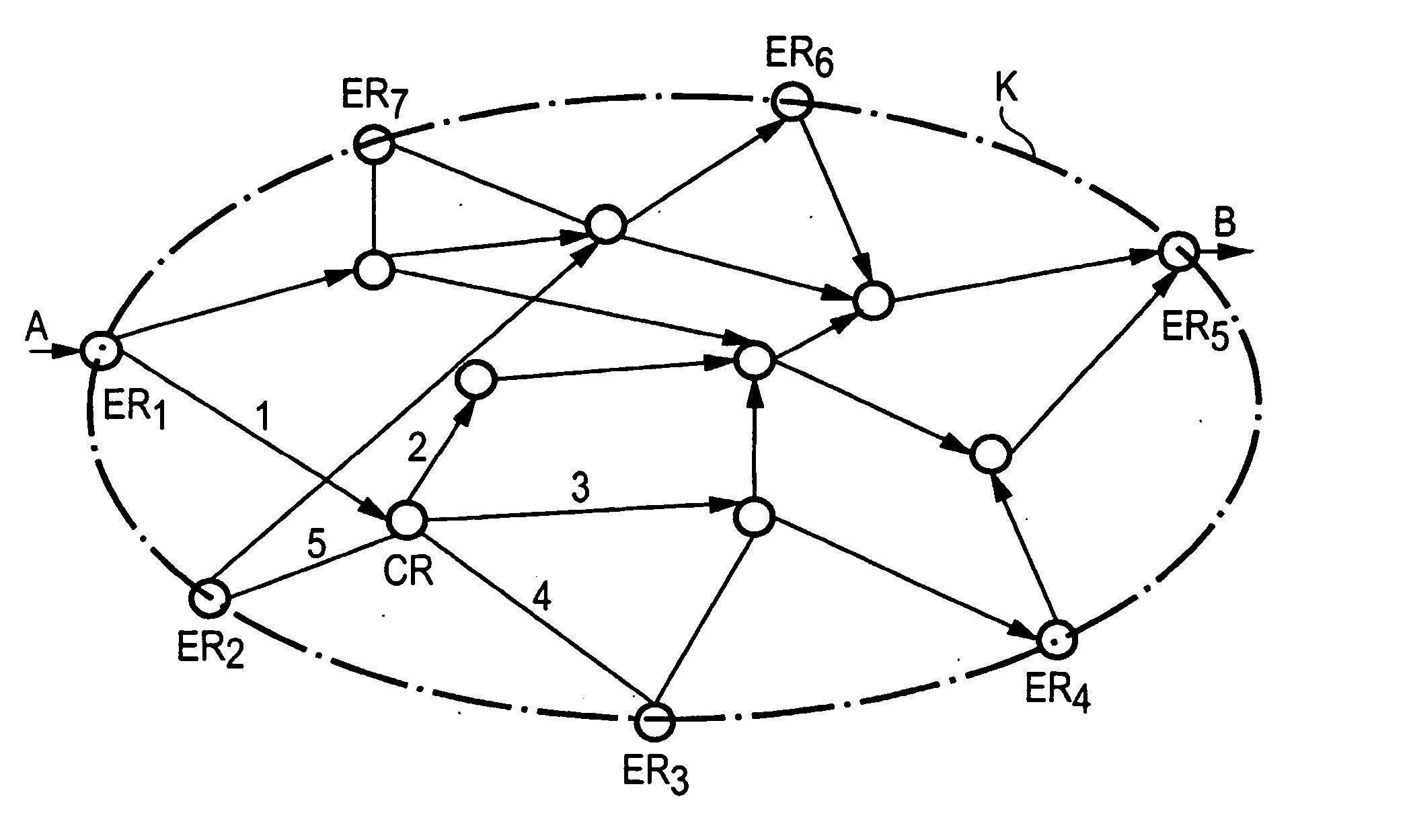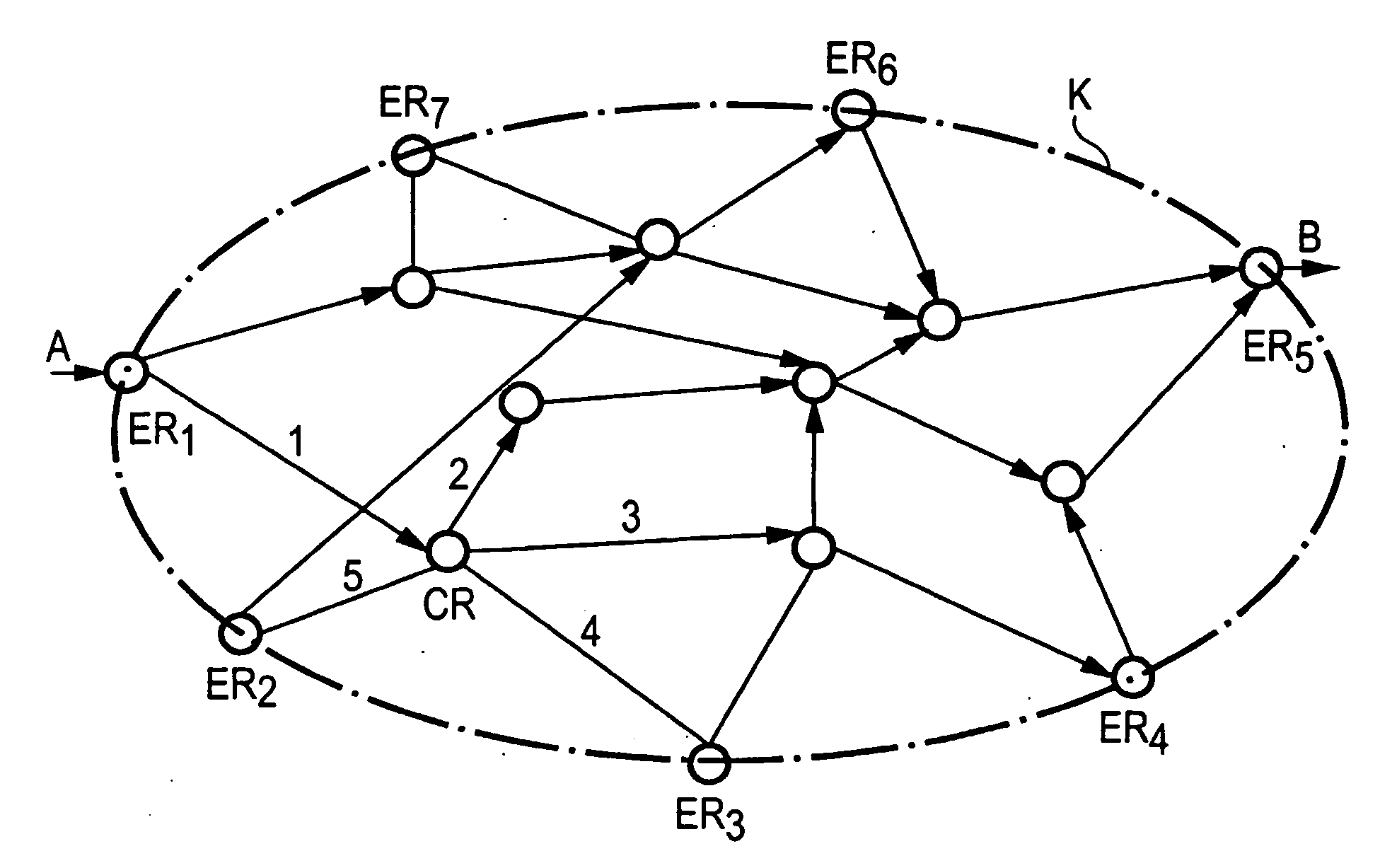Method for selecting useful routes in a router for even traffic distribution in a communications network
a technology of a router and a fanout structure, which is applied in the direction of error prevention, digital transmission, data switching networks, etc., can solve the problems of inability to compensate for information, increased delays, and inability to detect audible clicking sound in the receiving device, etc., and achieves low cost and simple solution
- Summary
- Abstract
- Description
- Claims
- Application Information
AI Technical Summary
Benefits of technology
Problems solved by technology
Method used
Image
Examples
Embodiment Construction
[0024]FIG. 1 shows a network configuration in which the methods according to the invention are executed. Accordingly, the FIGURE shows a communication network K comprising a number of intermeshed routers. The routers are divided into edge routers ER or core routers CR, depending on whether they are located on the edge of the communication network or within it.
[0025] For purposes of the example, it may be assumed that data packets penetrate communication network K via node A, in which Edge Router ER1 is located, and leave the communication network again via node B, in which Edge Router ERS is located. In accordance with the invention, a decision is made on the basis of a distribution fan-out structure in each router as to the paths over which the data packets are to be routed in communication network K. Since, depending on the service to be used, a quality of service QoS is to be guaranteed, the data packets are to be distributed as evenly as possible on the paths in the network.
[0...
PUM
 Login to View More
Login to View More Abstract
Description
Claims
Application Information
 Login to View More
Login to View More - R&D
- Intellectual Property
- Life Sciences
- Materials
- Tech Scout
- Unparalleled Data Quality
- Higher Quality Content
- 60% Fewer Hallucinations
Browse by: Latest US Patents, China's latest patents, Technical Efficacy Thesaurus, Application Domain, Technology Topic, Popular Technical Reports.
© 2025 PatSnap. All rights reserved.Legal|Privacy policy|Modern Slavery Act Transparency Statement|Sitemap|About US| Contact US: help@patsnap.com


